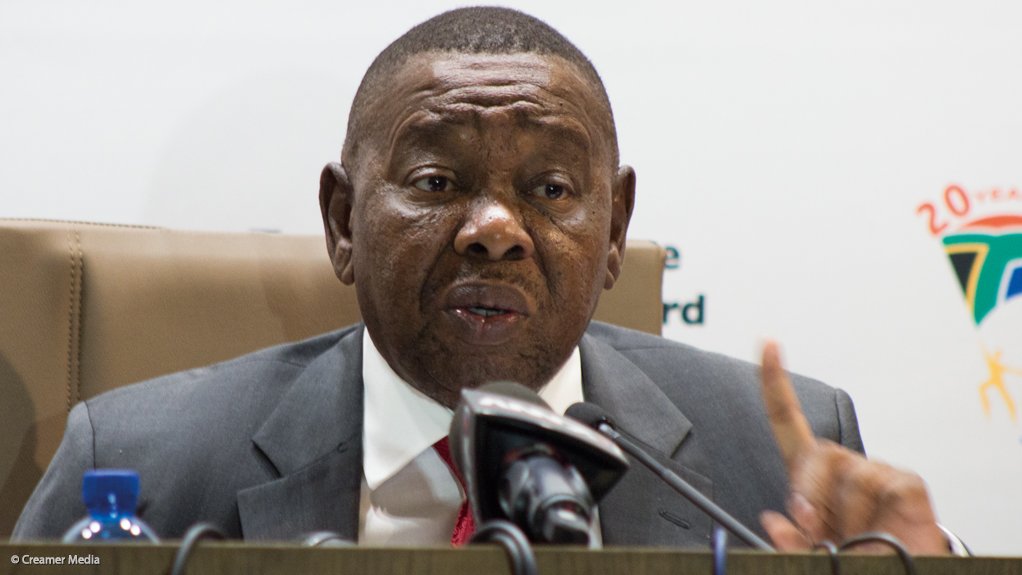Graduating matriculants should not consider acceptance to a university as the only option available to them to kick-start their career, but should also investigate other further education opportunities within the Post-School Education and Training (PSET) system, Higher Education and Training Minister Blade Nzimande has asserted.
“The future of our youth doesn't only lie in going to university after Matric, there are many other opportunities that can be accessed. It is important that we break away from the ‘cul de sac’ [mentality] that we have [as a] country and [which we impose on] our youth when it comes to education,” he said on Monday.
Nzimande’s comments came during a media briefing in Pretoria at which he announced that 425 095 opportunities were available to school-leavers in 2015 within the PSET system – 28 646 above that offered by the national tertiary education system in 2014.
Of these, 204 522 new entrant opportunities were offered at the country’s 26 universities, while 44 000 engineering and business studies opportunities and 37 000 National Certificate Vocational programmes were offered at the 50 technical and vocational education and training (TVET) colleges.
Some 85 900 “occupationally-directed”, or apprenticeship, opportunities would be offered in collaboration with TVET colleges, sector education and training authorities (Setas) and employers.
An additional 37 423 learning programme opportunities in the form of 3 380 apprenticeships, 4 513 bursaries and 29 530 learnerships would be provided by the various Setas, while 16 250 artisan opportunities would be provided within the PSET structure.
Moreover, the 21 Setas would help to promote and fund occupational programmes linked to educational institutions and workplaces.
These opportunities excluded those offered at nursing and agricultural colleges.
Nzimande’s announcement came a week after Basic Education Minister Angie Motshekga revealed that the national Matric pass rate had dropped from 78.2% in 2013 to 75.8% in 2014, while the average pass rate for maths had decreased from 59.1% in the prior year to 53.5% in 2014 and the average pass rate for physical science from 67.4% to 61.5% over the same period.
Of the 403 874 learners that satisfied the requirements of the National Senior Certificate, 150 752 qualified for admission to bachelor studies at higher education institutions, 166 689 qualified for admission to diploma studies and 86 022 learners qualified for admission to higher certificate studies.
“In 2015, our public universities will provide access to around 204 522 new entrants wishing to pursue their studies across all general, technical and professional fields, including business and management, science, engineering, agriculture and technology, humanities, social sciences, the arts and education,” Nzimande outlined.
The Minister added that government’s PSET sector, through Setas and the National Skills Fund (NSF) had committed over R1.7-billion in the 2015/16 financial year to opportunities in artisan fields that would result in grants for over 16 250 artisan learners.
“Matriculants who have an inclination to become an artisan, such as a motor mechanic, plumber, electrician, chef or hairdresser, can register on the National Artisan Development Support Centre (NADSC) website [to access this funding].
“However, it is critical to note that, to be accepted into an artisan programme, matriculants must have completed mathematics and science as subjects as industry requires a pass mark of 50% or higher,” he cautioned.
Matriculants who did not have mathematics and science, but who had passed and wanted a career as an artisan, could also register at the NADSC for the Generic Trade Preparation Programme – a bridging course implemented at public TVET colleges.
Further outlining opportunities available to school-leavers, Nzimande noted that TVET colleges also offered occupationally-directed programmes accredited by Setas under the auspices of the Quality Council for Trades and Occupations.
Among these were programmes that were offered through apprenticeship or learnership agreements between students, TVET colleges and employers.
TVET colleges had set aside 85 900 study opportunities for this mode of delivery.
Setas would further be providing 37 423 learning programme opportunities in the form of 3 380 apprenticeships, 4 513 bursaries and 29 530 learnerships.
Elaborating on “one of the most successful schemes established by government to assist students from poor disadvantaged families with academic ability”, the Minister added that the National Student Financial Aid Scheme (NSFAS), which provided loans and bursaries to students at all 26 public universities and 50 public TVET colleges, would, in 2015, be funding 205 000 first-time students at universities and 200 000 students at TVET Colleges.
This would see it awarding student loans and bursaries to the value of R9.5-billion.
“In addition to the funds that the NSFAS received from the funds voted by Parliament, the NSF makes further annual allocations aimed at funding the full cost of study towards critical skills programmes, most needed for the growth of the economy.
“The NSFAS has been allocated over R562.9-million for bursaries for scarce and critical skills for the current year from the NSF,” said Nzimande.
He encouraged those that had passed Matric to contact the various PSET institutions to select a career path from the range of options that had been made available within the national tertiary education system.
EMAIL THIS ARTICLE SAVE THIS ARTICLE
To subscribe email subscriptions@creamermedia.co.za or click here
To advertise email advertising@creamermedia.co.za or click here














